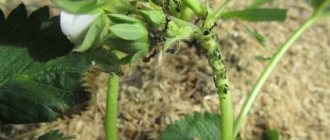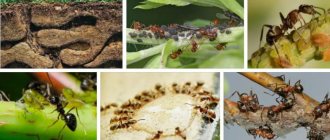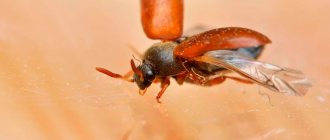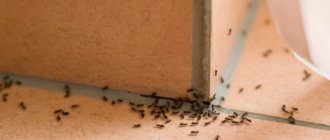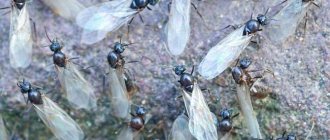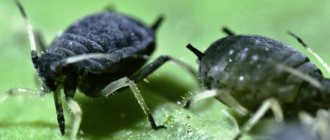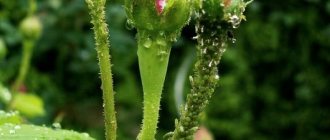The appearance of a wireworm on a site is difficult to confuse with anything else. This pest undermines tubers and shoots of plants, and it is not easy to get it, because it can burrow into the ground to a depth of several meters. But even such a scourge can be fought.
The wireworm is not such a “promoted” enemy of potatoes as the Colorado potato beetle. They write a lot about the latter and every season they advertise another new means of control that is “guaranteed to get rid of the beetle.” And it seems that no one cares about the inconspicuous click beetles and their larvae - wireworms. That is why their biology has been poorly studied, and control measures are few and ineffective. Yes, and it is not possible to detect the wireworm right away, and when it catches the eye of gardeners, the plant usually cannot be saved. However, you can fight this scourge. But let's study it in detail first.
What does a wireworm look like?
The body of the wireworm is elastic, dense and elongated, part of the integument on the abdomen is chitinized plates. The yellow or light brown body consists of a head and 9 segments: 3 thoracic and 6 abdominal.
The head is a quadrangle, narrowed in front, with rounded corners. There are 5 pairs of main setae on the frontal plate; different species may have additional setae. On the membranous base there are antennae consisting of 3 segments.
The pest has double jaws, the upper one is sickle-shaped with small teeth and 3 pairs of legs. All are equally developed and covered with hairs, bristles and small spines.
Adults have a flat body 7–20 mm long. The color of beetles can be dark brown, gray, brown, black with a metallic tint. Insects have a natural ability to make loud clicking sounds, turning over on their backs and jumping. For this feature they are called click beetles . Unlike larvae, adult insects feed little and do not cause significant damage to plants.
In our country, different types of beetles are common: dark, striped, shiny, steppe, Siberian, broad, sowing.
The first method of autumn processing is digging
More than one generation of gardeners has debated the advisability of digging up beds in the fall, but in areas where there are a lot of wireworms, this activity is necessary. You can arm yourself with a shovel or pick up a motor cultivator; the main thing is to turn over the layer of soil so that the larvae and eggs are on the surface. The optimal digging depth is the bayonet of a shovel.
During autumn digging, you need to remove as many weeds as possible along with the roots - this is food for the dangerous larva. If live individuals are found, it is also better to collect them in order to reduce the population in the area. Autumn digging with a selection of weeds brings the larvae hidden for wintering to the surface, makes them easier for birds to access, and deprives the wireworm of food. Already in the spring, the number of pests will be noticeably lower.
In the spring, the problem area also needs to be dug up. Its timing depends on the region, usually it is April or May, but in southern latitudes you can work as early as March. During spring digging, the surviving click beetle larvae will end up on the surface and become prey for birds.
You need to dig up the beds in the fall as early as possible, before the air temperature drops. The faster the earth cools, the deeper the wireworm hides.
Wireworm larvae and adults
The development of the click beetle lasts 4–5 years . In the spring after wintering, female beetles lay small white eggs at the root collar of plants. Each clutch can contain 3–10 pieces. In 1 year, the female lays up to 200 eggs .
After 3–4 weeks, larvae 1.5–2.2 mm long emerge from them. The body of wireworms is initially light and transparent, and the head is yellow.
The insect spends 2–5 years in the wireworm larvae During the first year, the larvae grow up to 5 mm. For the winter they burrow 0.5 meters into the ground. The next year they continue to grow and develop.
Under unfavorable conditions, the larvae lag behind in development. The exact number of molts and generations of the wireworm cannot be determined. It depends on the type of pest, humidity, temperature, and availability of food. Most often, molting occurs 7–14 times, in the first year – 1 time and in subsequent years in spring and autumn. At the same time, larvae of different ages, ranging from 15 to 30 mm in length, can simultaneously be present in the soil at a depth of 10–12 cm.
In the first year, the larvae are inactive; as soon as they hatch, they feed on humus. The next year they change color to yellow or light brown and actively search for food. From this period, the wireworm becomes a dangerous pest.
The final transition from the perennial larval state to the adult stage occurs in June-August. Having finished feeding, the larvae pupate in the soil at a depth of 5–15 cm. After 2-3 weeks, young click beetles appear, which immediately go to winter and fly out of the ground, only next spring - in April-May, to begin a new breeding cycle.
What repels wireworms
Click beetles and wireworms are repelled by the following crops:
- green manure - wireworms do not like mustard, so plant it in the fall, wait until it grows to 10 cm, then cut it and put it in the ground for the winter. Repeat this operation in early spring and also plow mustard into the soil. A rotted plant releases essential oils that repel wireworms. You can also plant rapeseed, rapeseed, buckwheat, spinach and sweet clover;
- legumes next to potatoes . For some reason, the omnivorous wireworm does not favor peas, beans and beans. In addition, these plants will additionally enrich the soil with nitrogen;
- It is believed that the wireworm cannot tolerate the aroma of dahlias. Even wheatgrass cannot stand proximity to these flowers.
Signs of plant infection
The voracious larvae of the click beetle damage seeds, roots, tubers and root crops of plants .
eat the embryo of the seeds , leaving a thin shell and deep holes on the sprouts. The pest gnaws holes in tubers and root crops and makes complex moves. This promotes the penetration of pathogens and decay.
In seedlings, the wireworm damages the tender roots and gnaws through the main stem . Plants wither and die.
The wireworm causes the greatest harm in spring and summer; at the beginning of autumn, the pest leaves for the winter.
People's secrets
In order to completely survive the wireworm from their garden, the owners divide the plot in half. One part is sown with rye (peas, mustard, buckwheat), and the other is used for planting (rows of crops are “diluted” with beans, dahlias, marigolds).
The next season, the same planting principle is repeated, only the area of the sown part is planted with garden crops (the parts are swapped: where they were sown, they are used for a garden). Some gardeners throw beans into the holes with potatoes to scare away the wireworms from the tubers.
Fighting with folk remedies is not only safer, but also much more effective, since the methods can be used regardless of the phase of crop development (flowering, ovary formation, period before harvest).
What soils does wireworm like?
The number of pests is affected by soil moisture and salt concentration in it. Most species living in the central regions do not tolerate moisture deficiency well. Only steppe species are more resistant to fluctuations in soil moisture. During drought they go deep into the earth.
Click beetle larvae love acidic soils overgrown with weeds. In such places there is always a lot of food for them. Of the weeds, the most favorite are wheatgrass, quinoa, and thistle.
In saline areas, pests feel worse, since particles of ammonium, potassium and sodium damage their chitinous covers.
Thanks to its ability to migrate deep into the ground, the wireworm hides from harmful high temperatures and frosts. Although in the central regions the pest can survive for several days when the temperature drops to -6 to -10°C.
The wireworm prepares for wintering in advance. Within 2 months, the volume of water in the body decreases and the amount of glycogen increases.
Methods for removing wireworms in the garden
I always start pest control with proven, improvised, but effective folk remedies. Only when they are ineffective do I move on to “chemistry”.
Using traditional methods
Effective remedies for wireworms that almost every gardener has:
If there is a coniferous forest near the site, cut off some branches before planting potatoes. Cover the holes with them - essential oils will not be to the taste of wireworms.
Use of specialized tools
If the above remedies are powerless, you have to turn to chemicals:
Another method is a trap made from a glass jar with insecticide. It is dug up to the neck into the ground and filled with sawdust treated with Zemlin.
What crops does the pest affect?
Wireworms damage the seeds and underground parts of many vegetable and ornamental plants.
Potato tubers, dahlias, gladioli, beet roots, carrots, strawberry roots, corn, daffodil bulbs, tulips, and iris rhizomes are subject to their invasion . Wireworms can chew through tomato .
Wireworm in potatoes
Wireworm in potatoes
Potatoes are the wireworm's favorite vegetable. Together with the Colorado potato beetle, these are the main crop pests. Once settled in a potato plot, wireworms can damage up to 60% of the tubers. Juicy potato roots are also a source of food for beetle larvae. Because of this, nutrition in the bushes is disrupted and the tuber yield is reduced.
Fungi, bacteria and nematodes settle through holes in the pulp. Damaged tissue around the passages turns black, and the tubers become inedible.
Signs of parasitism on vegetable and fruit crops
The wireworm is an underground dweller. It can be discovered when digging up an area, when the larvae are thrown to the surface.
Secondary signs:
- The seeds do not germinate. When the holes are dug out, damage is visible.
- The seedlings are withering. The parasite eats up young roots, preventing the plant from developing.
- On root crops and potatoes, subtle movements made by the pest are noticeable.
It is difficult to detect wireworms in plantings of potatoes and root crops without tilling the soil or digging up the fruits. The larvae eat individual bushes without going far, and there is practically no permanent damage. Affected plants wilt. Pests are also noticed when loosening the beds, when they appear on the surface.
The peculiarity of wireworms is that they move vertically in the soil, but only slightly in the horizontal direction.
How to get rid of wireworm?
Chemical and biological drugs
Bazudin
Contact insecticide based on diazinon. Destroys the pest by penetrating the intestines. The anti-wireworm drug is applied to the soil once when planting tubers. The depth of application of the product is 5–15 cm.
It is recommended to mix the drug with dry sand or sawdust before application. They fill a 1 liter container ¾ full and add 30 g of insecticide. Add 1 teaspoon of the working mixture to each well. The protection period lasts 15 days.
Zemlin
Granular preparation with odor. Used as bait for pests. It enters the insect's body along with food and poisons it from the inside.
When planting potatoes, bulbs and tubers of other plants, the drug is used in the same way as Bazudin. The product is mixed with sand or sawdust and applied to the soil when planting. 30 g of the drug is enough to treat 20–30 m².
Initiative
The insecticide is applied to the soil before sowing seeds, planting seedlings and planting material of vegetable and ornamental crops. 2 tsp. a mixture of dry sand and 30 g of the drug is added to each well. The product begins to act on the first day after application.
Prestige
A modern systemic contact drug based on imidacloprid. Once in the pest's body, it paralyzes and causes death. 20–25 ml of the product are diluted in 1 liter of water and sprayed on the planting material before planting.
Provotox
Granular preparation for soil application. The consumption rate of the drug is 40 g per 10 m². The insecticide is applied to the prepared soil after harvesting or during planting. Place 1–2 granules in each hole at a distance of at least 5 cm from the tubers or seeds. The product should not be used at temperatures above 25°C. The best time to use is in the morning from 9 to 10 o'clock or in the evening after 18 o'clock.
Metarizin
Bioinsecticide for the prevention and destruction of wireworms and other pests. Contains fungal spores from the genus Metarizium. After applying the drug to the soil, wireworms ingest fungal spores. They germinate in the intestines of the pest and spread throughout the body. Spores can germinate immediately in the soil and penetrate the body of insects through the chitinous cover.
The fungus releases substances that are toxic to the pest and the beetle larvae die. Spores emerge from decomposed remains and infect other pests. The protective effect lasts for several years.
Dissolve 0.5 liters of bioinsecticide in a bucket of water and water the soil with the solution when digging or hilling. The drug has a short shelf life; it must be used within 3 months after production.
Anthonem-F
An effective biological product based on nematodes. Together with irrigation water, nematodes enter the soil and then into the pest’s body. The product acts as an intestinal insecticide.
Inside the wireworm, nematodes multiply and after 8–15 days, thousands of new nematode larvae emerge from its body, capable of infection.
Only wet soil is treated with the biological product in the morning, evening or afternoon in cloudy weather. The air temperature should be between 10–28°C. Anthonem-F is capable of reducing the number of click beetle larvae by 95–100%.
Traditional methods
- When digging in spring, lime (120–150 g per 1 m²) or 20–25 g are added to the holes when planting. In acidic areas, this method solves two problems: it improves soil pH and fights wireworms.
- ash saves you from wireworms . 2–3 tbsp. l is added to each hole when planting potatoes and other vegetables.
- Before planting, tubers and bulbs are soaked in a decoction of onion peels . 1 kg pour 5 liters of water and bring to a boil. Use after cooling.
- Instead of onion broth, seedlings and tubers can be treated with a 1% solution of potassium permanganate .
- Mustard powder effectively fights wireworms . 1 teaspoon of powder is poured into the hole. In heavily infected areas, add a little hot red pepper .
- In small areas in the spring before planting, the use of bait . Pieces of potatoes, carrots, and beets are placed in moist soil at a depth of 5–10 cm. After 2–3 days, the baits are checked; if pests are present, the baits are doused with boiling water and the insects are destroyed.
Chemicals
These are more aggressive methods of combating wireworms in the garden, but sometimes you cannot do without them. Be sure to use protective equipment: gloves, goggles, respirators.
— When planting tuberous crops, treat each onion with approximately 250 ml of manganese solution, 2-4 g per bucket of water;
— Some mineral fertilizers “displace” wireworms a couple of meters deep into the ground. There they no longer reach the crops. You will need approximately 30 g of ammonium nitrate or ammonium sulfate per square;
— Superphosphates treated with insecticides have proven themselves well. This is a more gentle method compared to using poisons directly. First, spray the fertilizers and let them dry on the film, and then apply them to the soil at a rate of about 5 kg per 100 square meters;
- As a last resort, use ready-made store-bought insecticides against wireworms in their pure form. Be sure to strictly follow the proportions and dosages on the label, because most of these substances are real poisons.
Photo: zen.yandex.ua
Prevention
- Autumn digging of the soil reduces the number of pests. The layer of earth is turned over and not broken into clods. In heavily infected areas, it is better to carry out this procedure later, on the eve of frost. Some larvae and adult beetles end up near the surface of the earth and die from low temperatures . In spring and early summer, when eggs are being laid, deep loosening . Detected beetles and their larvae are immediately removed from the ground and destroyed.
- Areas overgrown with weeds, especially wheatgrass and thistle, . The pest loves to feed on the roots of these herbs.
- The wireworm avoids places where legumes used to grow. This fact is taken into account when planning crop rotation. Beans and peas can be planted in rows around the perimeter of the site. Planting calendula and marigolds . The secretions of these plants discourage the wireworm's appetite.
- It is important to monitor the acidity of the soil. At elevated pH levels, lime the soil or add ash (2 liters per 1 m²). This worsens the living conditions of insects.
By carrying out prevention and systematic treatment of the soil with preparations, you can get rid of wireworms on the site in a few years.
More details: you will learn how to deal with wireworms from the video.
Preventive measures to combat wireworms
Avoiding the appearance of wireworms on a site is easier than dealing with its large population. To do this, you need to apply a number of preventive measures:
- observe crop rotation - this is especially important when planting potatoes. Often a certain plot of land is allocated for it and potatoes are planted there year after year, surprised by the constant crop failure;
- harvest root crops on time and do not leave them for the winter - by eliminating the source of food and heat, you will deprive the wireworm of a comfortable wintering;
- reduce the acidity of the soil - you can determine that the soil has become highly acidic by looking at the indicator plants growing on the site, for example, horsetail, sorrel and plantain;
- attract wireworm and click beetle enemies to the area . First of all, these are birds. Starlings, crows, blackbirds, doves, rooks, wagtails and tits are especially fond of wireworms. The main means of attracting birds to the site are birdhouses. They destroy wireworms and ground beetles, which are carnivorous insects and happily feed on their “brethren”;
- destroy weeds . Burdocks and wheatgrass are a ready “home” for the larvae of the click beetle. Therefore, they need to be destroyed first, just like any other weeds;
Advice from experienced gardeners
It is not easy to remove wireworms from your area, but it is important to prepare yourself for a serious fight, since only in this case can you count on a positive result.
Effective methods of control, according to experienced gardeners:
- Between the rows of potatoes it is worth planting lettuce, which the wireworm loves so much. As soon as it grows up, it should be dug up with the larvae and destroyed.
- Cut thin wooden sticks 20-25 cm long and sharpen them on one side. String raw potato slices on them, and then deepen them into the soil, but so that they are slightly visible. After 2-3 days, dig traps and destroy the wireworm larvae. Repeat until complete destruction.
- Before planting tubers and bulbs, you should scatter 5 kg of sawdust onto the film and spray them thoroughly with any chemical preparation. After drying, place a pinch of the prepared product in each hole.
- Grind the leaves of celandine, nettle, coltsfoot and dandelion in a ratio of 1:5:2:2. Pour the green mass with water (10 l). Leave the product for three days. Water the garden with the prepared solution 2-3 times every week.
Why are wireworms dangerous in the garden?
The wireworm causes serious harm, as it is practically omnivorous. At the same time, it damages plants regardless of their stage of development. The pest affects not only roots and tubers, but also young shoots, as well as the stem, that is, everything it can reach. Yield losses in the garden can be 65-80%, and this trend continues every year, since the pest remains to overwinter in the soil.
Important! The greatest danger is posed by the larvae in the first two years of life, as they grow and feed intensively, destroying everything in their path.
The pest is especially active during dry periods, when it tries to replenish moisture deficiencies by eating juicy tubers and bulbs. In the process of its life, it makes characteristic through holes in the tubers, which subsequently rot.
If there are no tubers nearby, then the wireworm attacks the shoots of plants, eating them at the soil level, which subsequently leads to their death.
Warning! Potatoes affected by wireworms lose their presentation and are not suitable for long-term storage.
